In the middle of southern New Mexico, near where they first detonated a nuclear weapon under the Manhattan Project in 1945, lies a 275 square-mile field of white sand dunes composed of gypsum crystals.
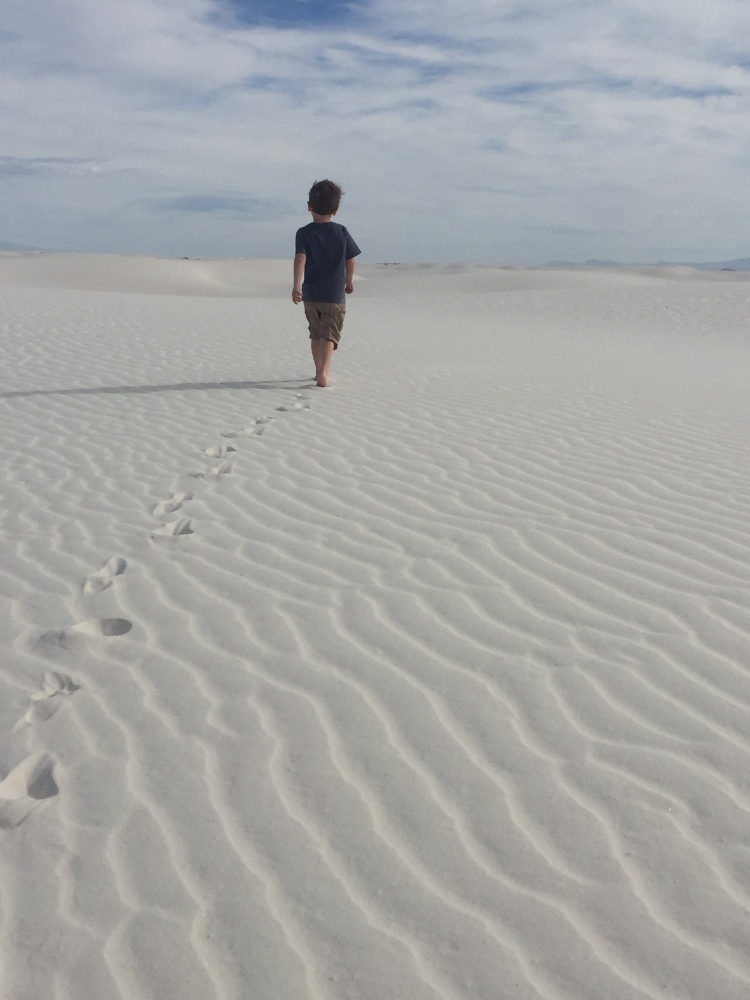
There were really no hikes to do in this park, so all we did was PLAY 🙂 When we arrived, we grabbed Junior Ranger books and rented sleds from the visitor center, then headed into the dunes.
The first few miles are paved, but after that, the road is on the sand. They do plow it down regularly (so it stays a road and isn’t overtaken by dunes!) but it is still a bit bumpy to drive on. Nevertheless, we persisted until near the back, where the “best” dunes for sledding were allegedly located.
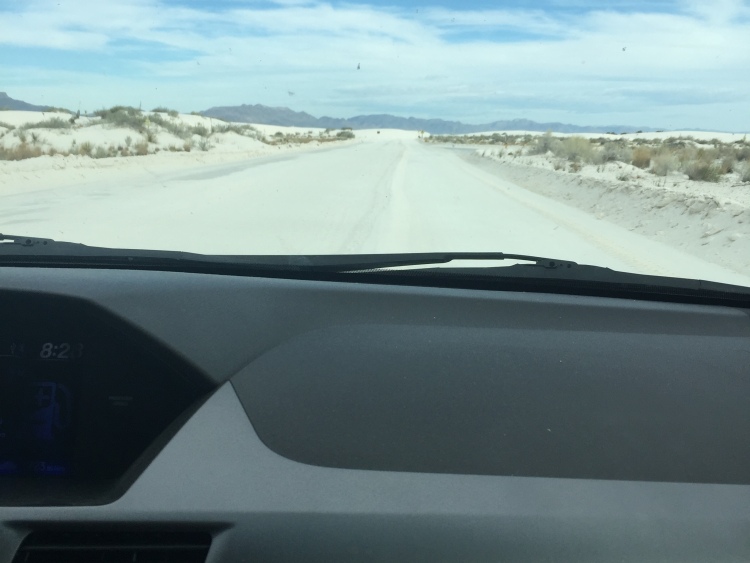
We found some decent-looking dunes, so got out our sled and hit the dunes!
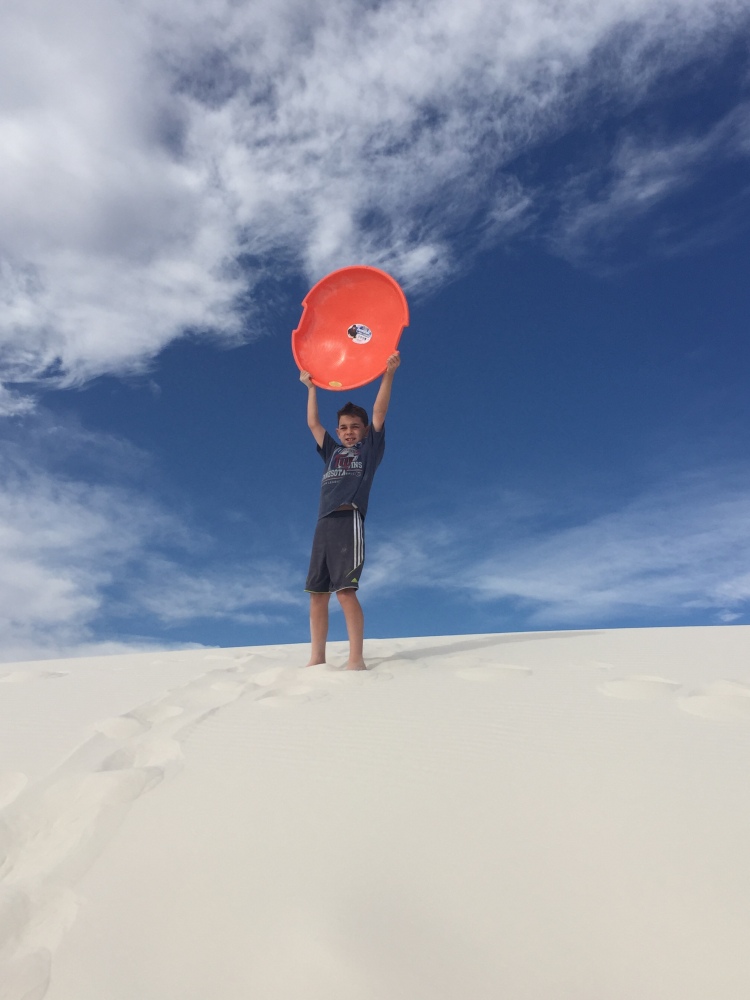
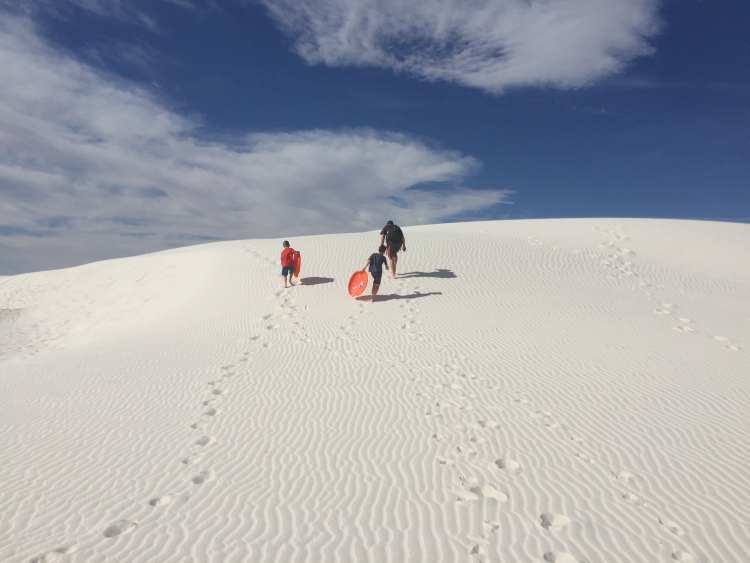
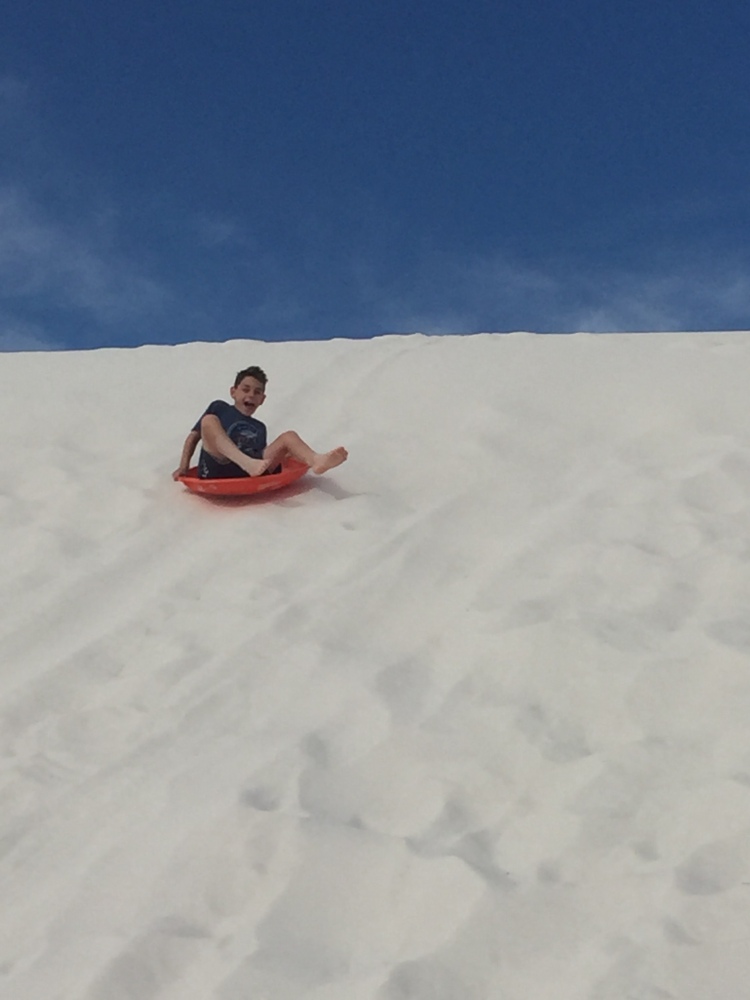
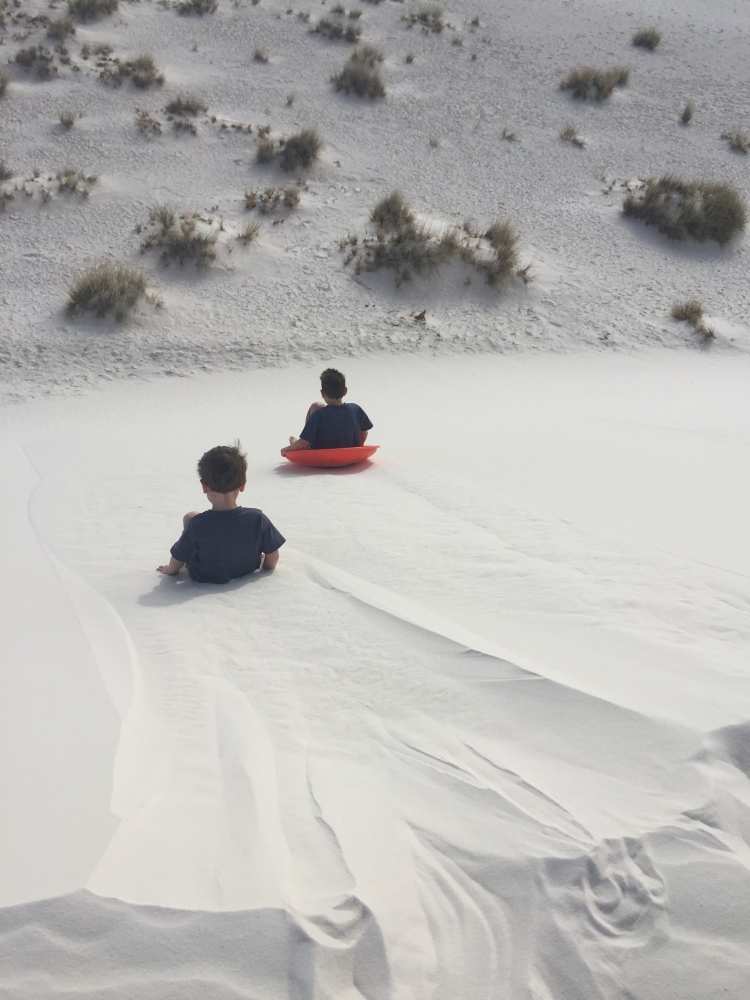
After about an hour and a half, we decided to take a break, because it was really hot out and walking up and down those sand dunes was hard work!
We headed to the picnic area, and had our lunch while the boys finished their Junior Ranger books.
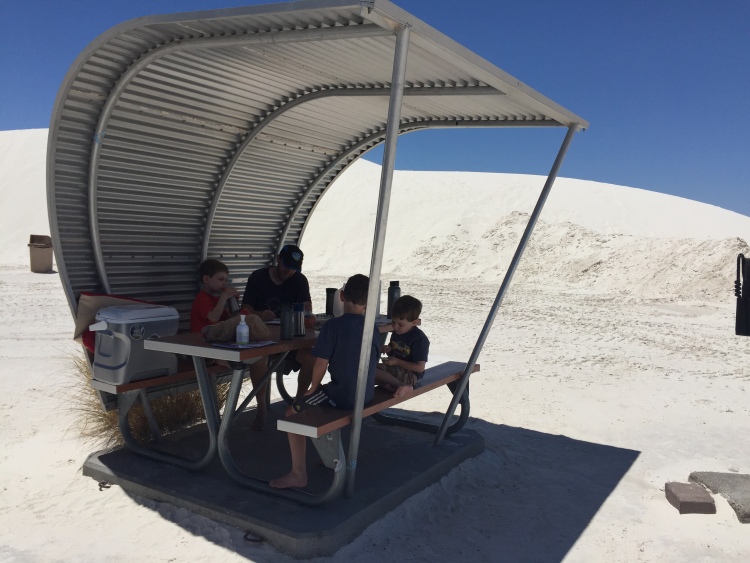
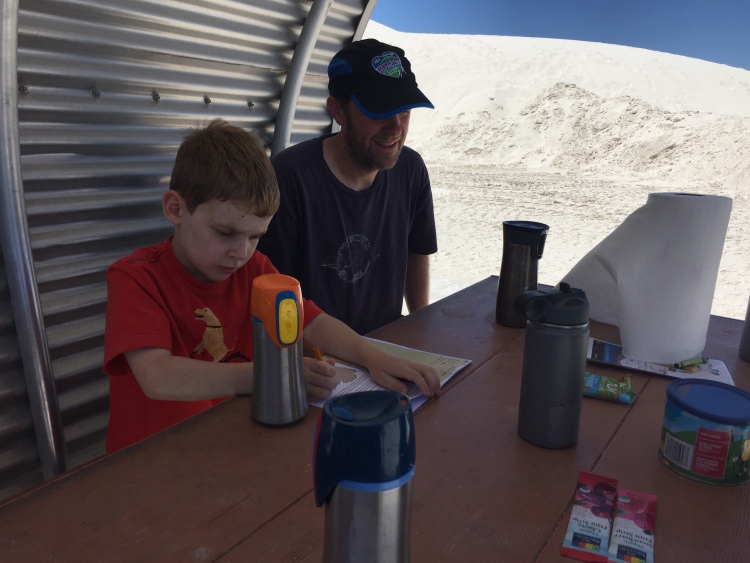
We went back to the Visitor Center for the boys to collect their Junior Ranger badges
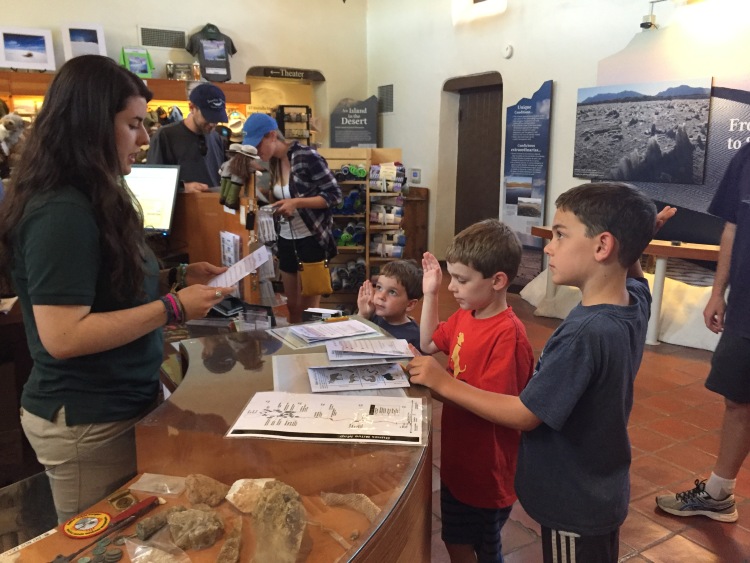
Saying the Junior Ranger pledge
Before we left town the next morning, we went back to White Sands and enjoyed the cooler morning weather, but it ended up being really windy, so we didn’t stay long (but we did see some cool wind patterns in the sand!)
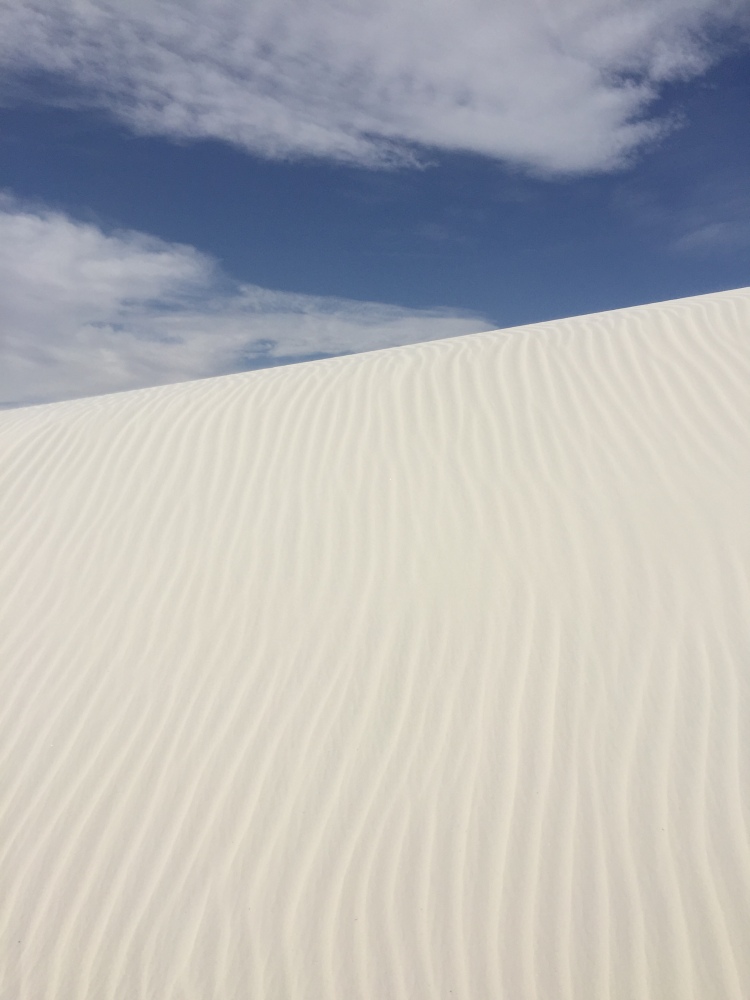
The cool thing about traveling by car and visiting multiple national park sites (and helping your kids work on the Junior Ranger books in said parks) is that you tend to learn how things tie together. At Guadalupe National Park in Western Texas, a few miles from the New Mexico border, we learned about the world’s premier example of a fossil reef, The Capitan Reef. It was a reef under a shallow sea that was eventually covered when the sea dried up. After nearly 200 million years, tectonic events caused the area where the reef sat to be uplifted. This uplift eventually exposed the reef, high above the desert floor. Just a few miles north, sits Carlsbad Caverns National Park. This National Park also owes its existence to that same reef we learned about in Guadalupe NP. The caves were formed when the limestone reef we learned about at Guadalupe was exposed to hydrogen sulfide from the petroleum in the nearby oil fields and oxygen in the water that seeped through the ground. This combination formed sulfuric acid, which aggressively dissolved the limestone to form the caves. Meanwhile, the gypsum forming White Sand Dunes NM was deposited by that same sea that held the ancient Capitan Reef. Eventually the gypsum from the ancient sea turned to stone. Then the tectonic events we learned about at the earlier parks also uplifted this gypsum rock, which eventually collapsed into a basin ringed by mountains. As the rain-soluble gypsum is worn away from the mountains, it is caught in this basin surrounded by mountains. Wind wears it into tiny sand-sized pieces.
